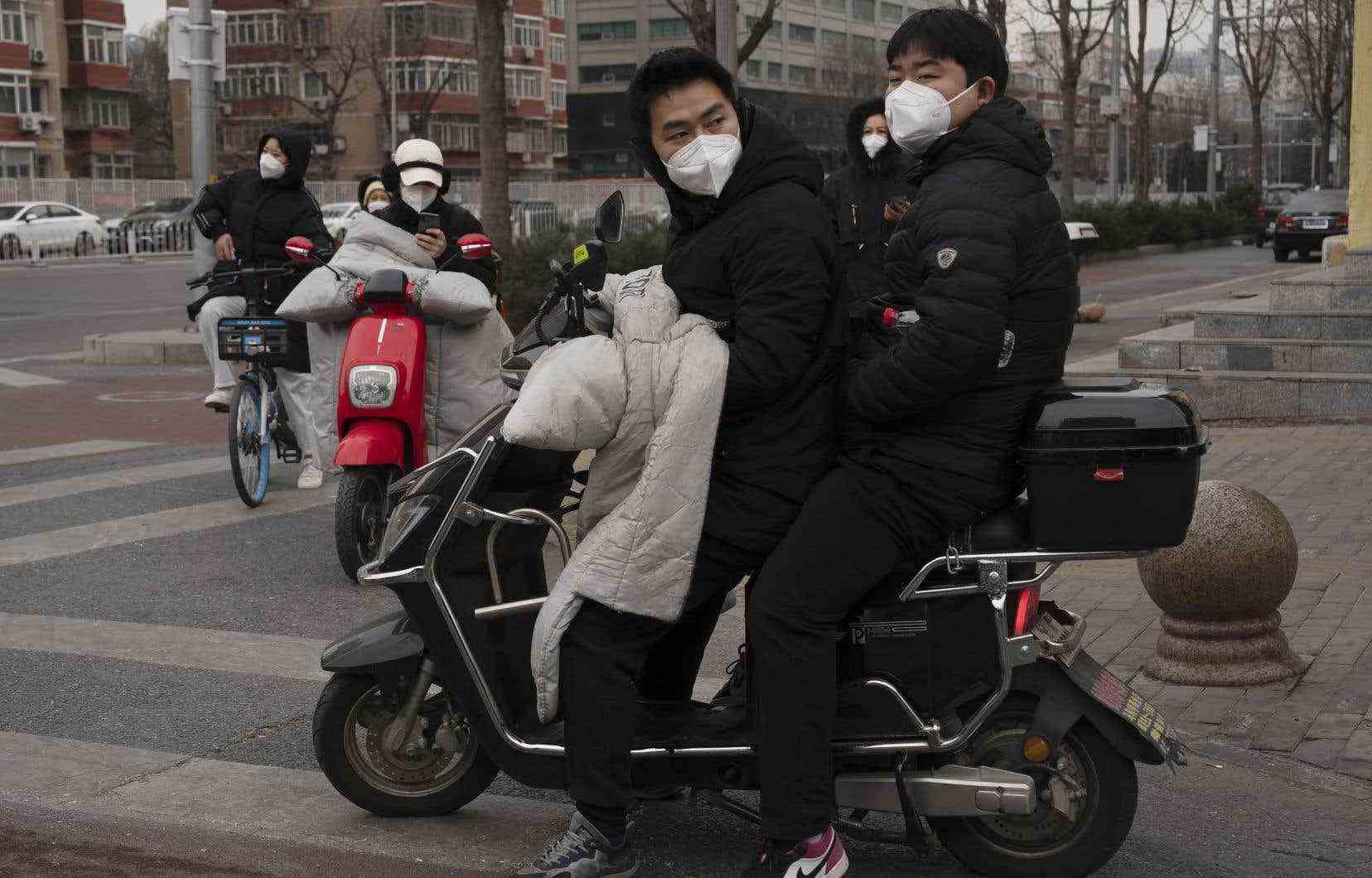Several Chinese cities further eased draconian anti-COVID rules on Friday, following historic protests in recent days demanding an end to restrictions and more freedoms.
Chinese anger and frustration with Beijing’s tough line on the fight against the pandemic spilled onto the streets of the country last weekend, a mobilization on a scale not seen in decades.
China reacted quickly to stifle the movement, with a heavy police presence on the streets and increased surveillance of social networks.
At the same time, several cities have started easing health restrictions, such as abandoning mass daily testing, a tedious pillar of life under the reign of “zero COVID”.
This did not prevent sporadic scuffles.
Images published Thursday evening on the Internet and geolocated by AFP show dozens of people facing officers in full protective suits outside a middle school in Yicheng, Hubei province.
According to the person who posted the video, these are parents whose children tested positive and were taken to quarantine facilities.
In the images, we see people coming to blows and parents kneeling, pleading to be able to bring their children home.
Anyone who tests positive in China must in theory be placed in a quarantine center, with variable comfort. But a radical change in doctrine seems to be currently at work.
In an analysis published Friday by the People’s Dailyan organ of the ruling Communist Party, several medical experts support the measures taken by some local authorities to allow this quarantine to be carried out at home.
“New Circumstances”
Officials from some neighborhoods in Beijing’s Chaoyang district said the measure is now being applied in their area.
The industrial city of Dongguan announced Thursday that people meeting “specific conditions” will be able to quarantine at home – without specifying what these conditions are.
The technological megalopolis of Shenzhen has applied a similar policy since Wednesday.
At the national level, members of the government have also signaled that a broader relaxation of the policy could be envisaged.
Speaking to the Ministry of Health on Wednesday, Vice Premier Sun Chunlan acknowledged the low dangerousness of Omicron variants and the improvement in the vaccination rate, according to the state agency. New China.
This is why China’s approach to the virus “is facing new circumstances”, she said.
A central figure in China’s strategy in the face of the pandemic, Ms. Sun did not mention the term “zero Covid”, raising hopes that this strategy, which for three years has upset the lives of Chinese people and the national economy, will soon be relaxed. .
From Monday, Beijingers will again be able to take the bus and subway without having to present a negative PCR test result dating back less than 48 hours, the town hall announced on Friday.
Users will however have to continue to present a green health passport, confirming that they have not crossed a “high risk” zone.
The same measure has been in place since Friday in Chengdu.
Hotels and restaurants
Also in Beijing, health authorities on Thursday called on hospitals to stop refusing care in the absence of a PCR test within 48 hours.
China has seen a series of deaths, when care or relief has been delayed by strict anti-COVID measures.
In January, a pregnant woman in Xi’an lost her baby after the hospital refused to take her in for lack of a valid PCR test.
These deaths have been a rallying cry during the protests, with a post going viral listing the cases of all those who have died due to neglect related to health restrictions.
Many other cities, however affected by an upsurge in coronavirus cases, are now allowing the reopening of restaurants, shopping centers and even schools, thus clearly deviating from the confinement rules which have prevailed so far.
In the city of Urumqi, capital of the Xinjiang region, where a deadly fire sparked the first protests, authorities announced on Friday that supermarkets, hotels, restaurants and ski resorts would gradually reopen.
This city of more than four million people has suffered one of the longest lockdowns in China, with some neighborhoods closed in early August.
The fire in an apartment building on November 26 killed 10 people there. The restrictions have been blamed for delaying relief.
